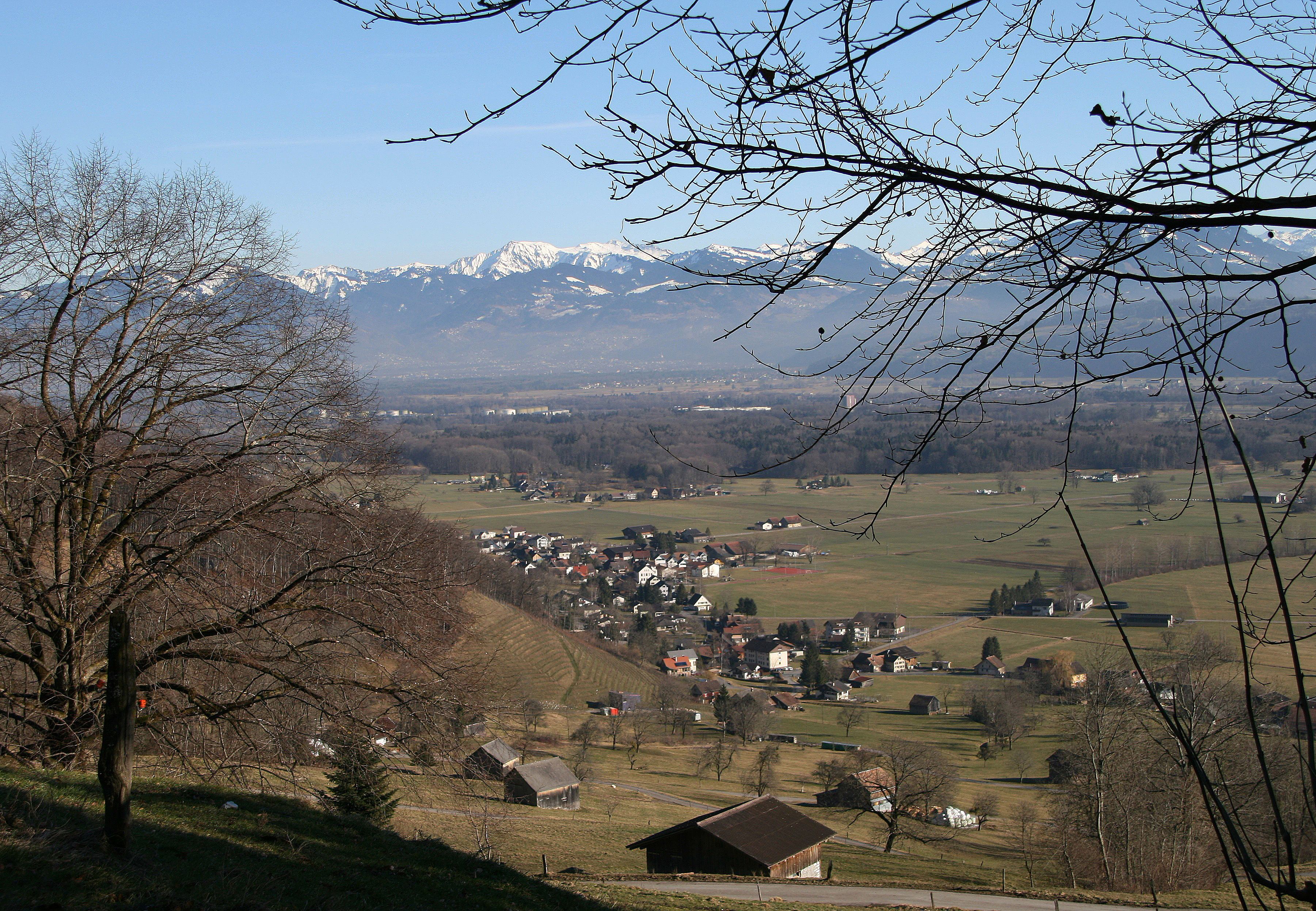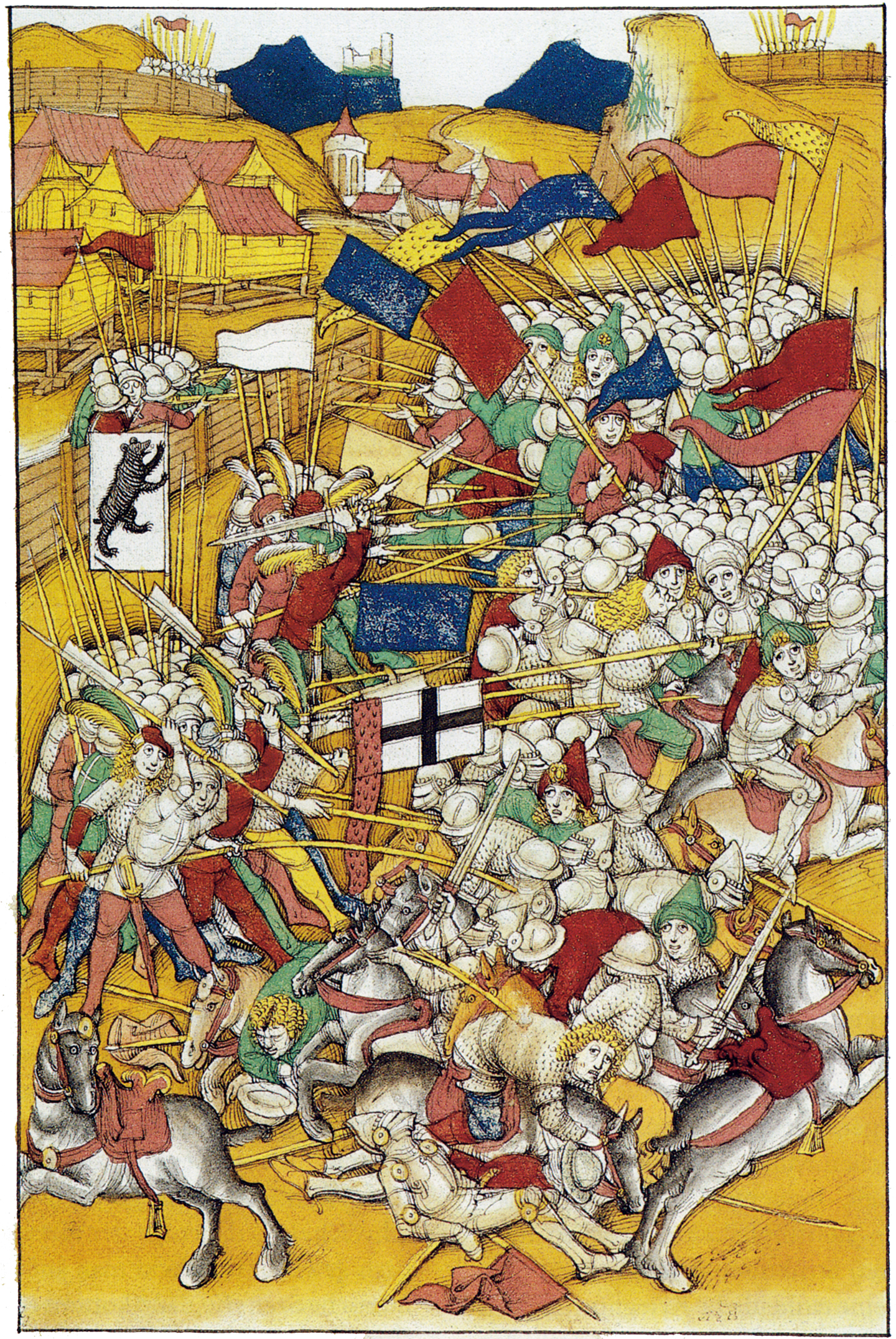|
Hohensax
The noble family von Sax (originally ''de Sacco'') were a medieval noble family in eastern Switzerland. They owned estates and castles on both sides of the Alps in the modern cantons of St. Gallen, Graubünden and Ticino. The origin of the family is unknown, but they probably stem from Churrätien nobility and were related to the da Torre family. The family divided into two main lines; the Grafen (counts) von Sax-Misox and the Freiherren (barons) von Hohensax. Origins The earliest mention of a member of the family is in 1137/39 with Eberhard de Sacco. In 1168, they were granted a fief over the Misox valley, probably as a reward for their support of the Hohenstaufen family. The founder of the line was Albrecht of Sax who first appears in a record in 1188. His brother, Heinrich reorganized the administration of the Abbey of St. Gall and brought it under their authority. Albrecht's sons, Ulrich (first mentioned 1204, died 23 September 1220) and Heinrich (born around 1180, last ... [...More Info...] [...Related Items...] OR: [Wikipedia] [Google] [Baidu] |
Hohensax Castle
Hohensax (german: Ruine Hohensax or german: Burg Hohensax) is a ruined castle in the Sennwald municipality in the Swiss canton St. Gallen. The castle was built around 1200 by the barons of Sax, and was destroyed in 1446. In 1248, the castle passed to Ulrich von Sax, founder of the Sax-Hohensax line of the noble family. The castle was plundered in a feud of 1393, and sold together with the villages of Sax and Gams to the dukes of Austria. In the Old Zürich War, the people of Appenzell captured and slighted the castle in 1446. After this, the barons of Hohensax resided in the nearby Forstegg castle at Salez. In 1640, the ruin passed to the barony of Sax-Forstegg, one of the constituent parts of the canton of Linth of the Helvetic Republic in 1798, and later the canton of St. Gallen. It included the villages of Sax, Salez and Gams. Gallery File:Hohensax Castle 4.JPG, View of the castle from below the tower File:Hohensax Castle 2.JPG, Castle walls File:Hohensax Castle 3.JPG, ... [...More Info...] [...Related Items...] OR: [Wikipedia] [Google] [Baidu] |
Sennwald
Sennwald is a municipality in the ''Wahlkreis'' (constituency) of Werdenberg in the canton of St. Gallen in Switzerland. Geography Sennwald has an area, , of . Of this area, 49.9% is used for agricultural purposes, while 31.5% is forested. Of the rest of the land, 9.4% is settled (buildings or roads) and the remainder (9.3%) is non-productive (rivers or lakes). Coat of arms The blazon of the municipal coat of arms is the historical coat of arms of the barons of Hohensax, ''Per pale Or and Gules.'' It was adopted as the municipal coat of arms, with added diapering, in 1937. Demographics Sennwald has a population (as of ) of . , about 22.6% of the population was made up of foreign nationals. Of the foreign population, (), 79 are from Germany, 65 are from Italy, 391 are from ex-Yugoslavia, 116 are from Austria, 66 are from Turkey, and 103 are from another country. [...More Info...] [...Related Items...] OR: [Wikipedia] [Google] [Baidu] |
Disentis Abbey
Disentis Abbey (german: Reichskloster Disentis) is a Benedictine monastery in the Graubünden, Canton of Graubünden in eastern Switzerland, around which the present town of Disentis ( rm, Mustér) grew up. Early history Formerly the date of the foundation of this abbey, attributed to the local saints Placidus and Sigisbert, was held to be 614. The tradition further states that this monastery was destroyed by the Avars (Carpathians), Avars in 670, when the abbot and thirty monks were martyred. The abbey, dedicated to Martin of Tours, Saint Martin of Tours, was then supposedly rebuilt by Charles Martel and Saint Pirmin about 711. The second and current view, based on more substantial research, is however that the foundation did not take place until the early 8th century. This is corroborated by archaeological investigation showing that the first traceable structure on the site was built in or about 700 and was destroyed in about 940, which is attributed to raiding Saracens. The acc ... [...More Info...] [...Related Items...] OR: [Wikipedia] [Google] [Baidu] |
Wartenstein Castle (St Gallen)
Wartenstein Castle is a castle in the municipality of Pfäfers of the Canton of St. Gallen in Switzerland. It is a Swiss heritage site of national significance. See also * List of castles in Switzerland This list includes castles and fortresses in Switzerland. Entries list the name and location of the castle, fortress or ruins in each Canton in Switzerland. Aargau Appenzell Ausserrhoden Appenzell Innerrhoden Basel-Land ... References Cultural property of national significance in the canton of St. Gallen Castles in the canton of St. Gallen {{Switzerland-castle-stub ... [...More Info...] [...Related Items...] OR: [Wikipedia] [Google] [Baidu] |
Blenio Valley
The Blenio Valley ( it, Valle di Blenio) is a valley of the Lepontine Alps in the Swiss canton of Ticino. The valley contains the river Brenno. The upper valley, between Lai da Sontga Maria and Olivone Olivone was a municipality in the district of Blenio in the canton of Ticino in Switzerland. On 25 January 2005, the cantonal authorities announced that Olivone would merge with Aquila, Campo Blenio, Ghirone and Torre to form a new municipali ..., is named ''Valle Santa Maria''. Valleys of Ticino Lepontine Alps {{Ticino-geo-stub ... [...More Info...] [...Related Items...] OR: [Wikipedia] [Google] [Baidu] |
Leventina (district)
The Leventina District is one of the eight districts of the largely Italian-speaking canton of Ticino in Switzerland. The capital of the district is Faido but the largest town is Airolo on the southern flank of the Gotthard Pass. Situated to the north of the canton, its territory covers the area of the Ticino River as far south as Biasca, in particular the Bedretto Valley and the Leventina Valley. Leventina is divided into four sub-districts, termed 'circles' ( it, circoli), and a total area of with a population of (as of ). Its capital is the municipality ( it, comune) of Faido. The valley became part of Switzerland on 5 March 1480, following the treaty of Lucerne with the Duchy of Milan. Geography The Leventina District has an area, , of . Of this area, or 4.2% is used for agricultural purposes, while or 36.5% is forested. Of the rest of the land, or 2.8% is settled (buildings or roads), or 1.9% is either rivers or lakes and or 36.5% is unproductive land. Of the b ... [...More Info...] [...Related Items...] OR: [Wikipedia] [Google] [Baidu] |
Mesocco
Mesocco ( Lombard: ''Mesòch'') is a municipality in the Moesa Region in the Swiss canton of Graubünden. History The first human settlement in the area dates back to the Mesolithic era. Stone tools dating to about 6000 BC have been found in the Silex section of the municipality. At the same site, Neolithic fire pits and ceramics (5000 BC) were also discovered. The first permanent settlements in the area date to the Bronze Age (about 1400-1200 BC) and the pre-Roman Iron Age. A notable necropolis from the early Iron Age (600-500 BC) and traces of a Roman settlement were discovered on Gorda hill near the village. Additionally, an Early Middle Ages grave (6th century AD) was also discovered on the same hill. The castle was built in the 12th century and is first mentioned in 1219. The village of Mesocco is first mentioned in 1203 as ''Mesoco''. In 1383 it was mentioned as ''Misogg''. In 1480 Mesocco and Soazza willingly joined the Gray League. Between 1907 and 1978, Mesocco was l ... [...More Info...] [...Related Items...] OR: [Wikipedia] [Google] [Baidu] |
Mesocco Castle
Mesocco Castle is a ruined castle in the municipality of Mesocco of the Canton of Graubünden in Switzerland. It is a Swiss heritage site of national significance. The Castello ruins are among the largest in the canton. Originally the seat of the noble family von Sax, from the 12th century until 1480 it was held by the Freiherr of Misox/Mesocco. From 1480 until 1549 it was held by the Trivulzio family. History A small fortified church, the Church of S. Carpoforo, was built on the hill top around the 7th century as a refuge castle for the surrounding villages. Around 1000, the fortifications around the church began gradually expanding and a bell tower was added to the church. A bergfried was added between 1150 and 1200, changing the shape and location of the walls. By the 12th century the fortified church and occasionally used fortifications had expanded into a permanently occupied castle with a nobleman who ruled over the nearby valley. [...More Info...] [...Related Items...] OR: [Wikipedia] [Google] [Baidu] |
Appenzell District
Appenzell District is a district of the canton of Appenzell Innerrhoden in Switzerland. It has a population of (). The area of Appenzell is . The district of Appenzell consists of a part of the village Appenzell, as well as Rinkenbach, Kau and Meistersrüte. History Prehistoric Appenzell While a single late Bronze Age site has been discovered in the forest outside Appenzell, there is no evidence of a prehistoric settlement. The region around Appenzell remained forested and very lightly settled until the end of the Early Middle Ages. Under the Abbots of St. Gall Under the authority of the abbots of the monastery of St. Gall settlers began to colonization of the Sitter river valley in the late 11th century. It is mentioned, in a deed granting rights to clear land, in 1071 as ''Abbacella''. At the same time, the parish of St. Mauritius was established. By 1200, the parish included the area of the modern district as well as villages of Brenden, Lank, Lehn and Meistersrüte. The ... [...More Info...] [...Related Items...] OR: [Wikipedia] [Google] [Baidu] |
Appenzell Castle
Appenzell Castle (german: Schloss von Appenzell) is a castle in the Appenzell District of the canton of Appenzell Innerrhoden in Switzerland. It is one of a few 16th century stone buildings in Appenzell. It is part of the Swiss heritage site of national significance. History The castle was built in 1563 as an elegant mansion the doctor Antoni Löw. Antoni was an enthusiastic supporter of the Protestant Reformation in Appenzell. In 1584 he was captured, judged and sentenced to death by the local Catholics for slandering a priest. After his death the castle was taken by the city and given to the Franciscans. They remained in the castle for almost a century, until 1682 when they moved into the newly completed St. Mary of the Angels. When the Franciscans moved out, the castle was sold to Antoni Speck who owned it until his death in 1708. It then passed to Johann Baptist Fortunat and then into the possession of the Sutter family. On 15 February 1875 Doctor Anton Alfred Sutter became t ... [...More Info...] [...Related Items...] OR: [Wikipedia] [Google] [Baidu] |





